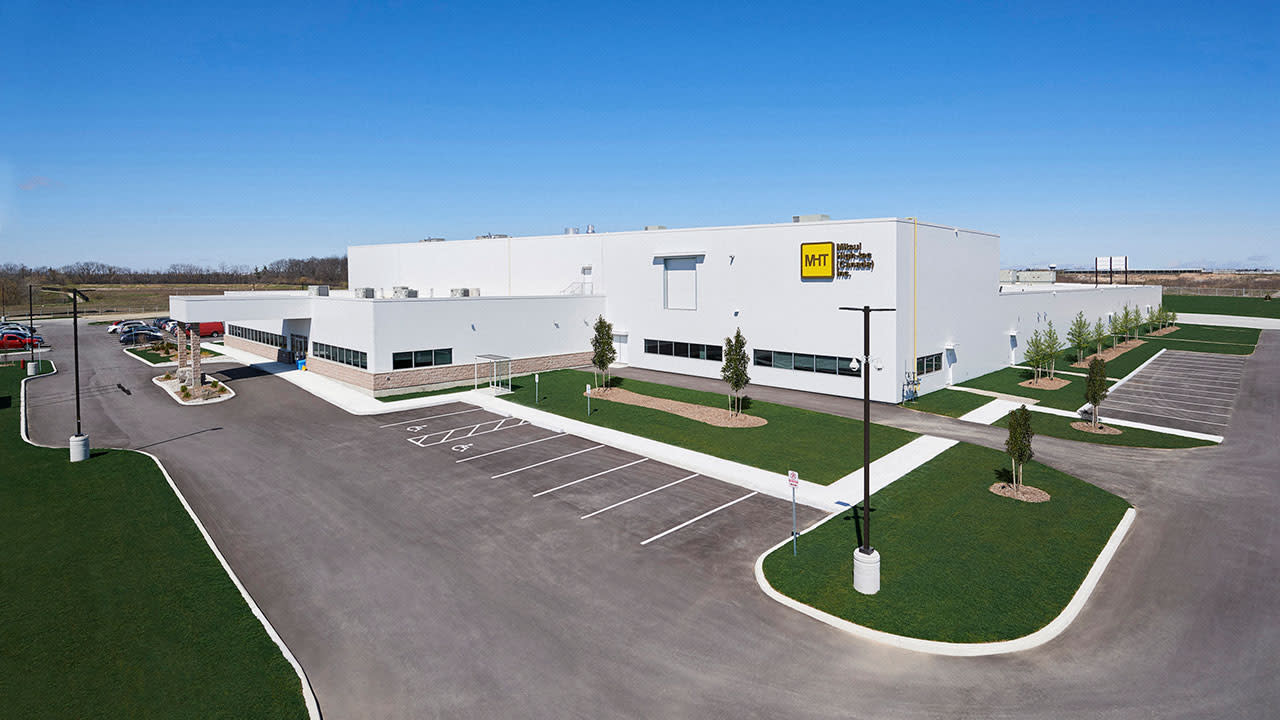Customer Story
Montréal, Ontario, and Pacific all moved to Procore.
Procore helped Magil streamline its processes, leading to increased collaboration, improved functionality, and time saved.

The Challenge
Magil Construction, a leading Montréal-based firm, was using project management software that was becoming increasingly difficult to use due to its outdated functionality and expensive customizations—not to mention it did not connect to crucial third-party applications. Magil wanted to find a solution that was more integrated, collaborative, and user-friendly.

The Solution
With Procore, Magil was able to integrate vital third party applications and bring all data onto a single, consolidated platform. Procore also helped Magil streamline its processes, leading to increased collaboration, improved functionality, and time saved.
“Instead of having different platforms for the same thing, we just have one. Everything is simpler now. All you have to do is go into Procore, and you can do 90% of your work.”
Tang Lee
Director BIM-VDC
Magil Construction
Saying Goodbye to Outdated Systems
Before using Procore, Magil had used a construction management solution for five years, but it was becoming increasingly difficult to use. The software was not only outdated, but the interface was clunky—making communication between teams near impossible. Magil's BIM-VDC Manager, Tang Lee (who now leads the implementation of Procore) originally joined the Montréal team to work on the functionality of the previous software.
"Our old system was extremely painful. It was very old—the way it was coded, the way it was set up, the UI. It was hard to use. That's when my partner and I decided to talk to our president and explained to him, ‘Look, this software is just not going to work. We need to look at something else.' That's how we started our research into the different construction management software solutions," Lee explains.
These frustrations came to a head when Magil began heavily using BIM 360. The issue was that their prior project management solution did not integrate with BIM 360, which meant employees were managing information in three separate systems—BIM 360 for on-site data, Sage for accounting, and the project management solution for items like financials, RFIs, and drawings. Lee and his team quickly realized that having an antiquated system that did not integrate with critical applications was creating dire project inefficiencies. What's more, this went directly against the president's vision for an efficient, streamlined project management process.
"Our president wanted to reduce the work and data entry for our coordinators and construction administrators. That's where the bottleneck hit with our previous solution. It wasn't designed that way; if you modified the system to be more collaborative, one, it took a lot of time and, two, it was very expensive because we needed external help to create certain coding architectures. It was burning a hole in our pocket modifying it the way we wanted it to work. That was when we knew we needed another solution," Lee recalls.
All Projects Move to Procore
After six months of trying to iron out the previous system's idiosyncrasies, Lee realized that it was costing Magil substantially—both in time and money. He began searching for alternative construction software that was both easy to use and would reduce data entry for the administrative team. He notes that one other factor also largely played a part in his decision.
"When we started looking at various systems, Procore was definitely the best when it came to user interface, and it was also the most robust out of the other programs. But our main criteria was that it had to be collaborative," Lee explains.
In 2017, Magil partnered with Procore and onboarded with Project Management, Construction Financials, and Quality & Safety, and implemented the products across all offices.
"Our Montréal president liked Procore very much. He decided to present Procore to all three offices—Montréal, Ontario, and Pacific—and use it for all our projects."
Magil also made use of third-party integrations like Sage 300 and DocuSign. "The Sage integration has definitely helped us see our purchase orders and get a better grasp on our general conditions, what we buy, and what we don't buy. It made things a lot more transparent with the Sage connection. As for the DocuSign integration, that's probably the best integration that we have. DocuSign is very strong. It's a very, very stable integration."
A Single Platform for Increased Collaboration
With Procore's comprehensive platform and over 100 integrated third-party applications on the App Marketplace, collaborators no longer need to toggle between programs. "Instead of having different platforms for the same thing, we just have one. Everything is simpler now. All you have to do is go into Procore, and you can do 90 percent of your work. Before, you needed to be connected to the server, go to the project management solution, or go into your emails. We were working in three different places."
Lee explains that eliminating the need to save items in various programs has significantly improved operational processes. "Employees love Project Management. It's definitely a lot more collaborative and easier to use. It saves a lot of time. Before when we did an RFI, we had to file it in three different areas. Today, the same RFI gets filed in Procore and that's it. We don't need to file it in our server or anywhere else. We just file it in Procore."
Today, all collaborators can access, update, and share important project information in one easily accessible location—improving standardization and ensuring consistency across teams. "We now have a single source of truth. It's easier to stay updated. For example, when we get drawings, we just have to upload them into Procore. It will automatically read the drawing number, and it will upload the latest version. We can still go back to the old version and compare the two plans. Before Procore, it was really hard to keep plans updated. Our old system definitely wasn't as smooth as Procore," says Lee.
These efficiencies and automated workflows have helped Magil streamline its processes and save hours of administrative work. "We probably cut RFI and drawing management time in half. The sub, as a free Procore user, can automatically enter an RFI or shop drawings into Procore. We just have to review it and send it off to collaborators—Procore automatically starts the workflows. That saves us a lot of time."
While upgrading to a more integrated, streamlined, and user-friendly system has helped make Magil's processes more efficient, Lee concedes that the team has also found another key benefit in partnering with Procore.
"Everybody who works at Procore—from the account managers to the implementation manager—they're fantastic. There's been much more support than we expected, and we think that's probably the best part of Procore. They listen to their customers and really try to improve the software."





